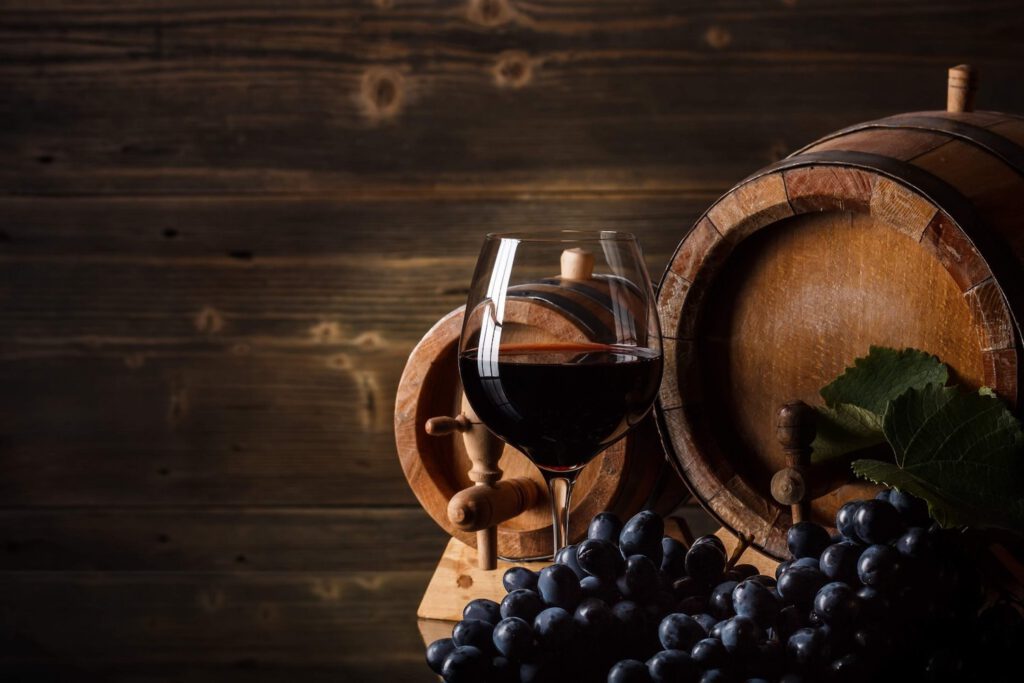Red wine is a type of wine made from dark-colored grape varieties. The actual color of the wine can range from intense violet, typical of young wines, through to brick red for mature wines and brown for older red wines. The juice from most purple grapes is greenish-white, the red color coming from anthocyan pigments (also called anthocyanins) present in the skin of the grape; exceptions are the relatively uncommon teinturier varieties, which produce a red-colored juice. Much of the red-wine production process therefore involves extraction of color and flavor components from the grape skin. It is a delicacy around the world.

Red Wine & Food Pairings
Red wine’s diverse styles and structure make it the ideal choice for the dinner table. Red wine has a firmer structure than typical white and rosé wines supporting it when coming up against strong flavors. Steak and Cabernet is the tried and true pairing, fuller-bodied red wines in general pair well with denser, heavier foods, while lighter bodied reds with high acidity pair well with lighter fare, like roasted chicken and vegetable dishes. Matching the weight of the wine with the richness of the food leads to successful and harmonious pairings.
The old adage, “what grows together, goes together” holds true as well. For example, traditional tomato sauce Italian dishes pair well with the high-acid red wines of Chianti. In general, a region’s wine will pair well with the food and lifestyle of the area.
Red Wine’s Ageability
Red wine is heralded for its ageability, but in order for a wine to age to its full potential, it must be stored properly. Factors that affect the aging process are temperature, light and humidity. Red wines should be stored at about 55° Fahrenheit, 10° F below the ideal serving temperature.
Wines stored too warm will accelerate the aging process, while wines stored in hot temperatures, above 75° Fahrenheit can be “cooked,” causing the fruit flavors characteristics to turn mushy and baked. A red wine stored too cold can also damage the wine, but is generally not as dangerous as overheating the wine. Low temperatures slow the aging process, but if your wine doesn’t freeze, there likely won’t be any extensive damage. Colder temperatures, like a 40° Fahrenheit refrigerator, are fine for short-term storage. Wines that freeze pose their own problems. As the liquid freezes it expands and can push the cork out, compromising the wine, or worse, cracking the bottle. While small changes in temperature are safe, it’s important to keep your wines at the most consistent temperature possible.
Red wines are bottled in green or brown tinted bottles to protect them from harmful ultraviolet (UV) rays. Light-bodied wines are at a greater risk of being spoiled by light than full-bodied wines, but it’s best to avoid any long-term exposure to light, both natural and artificial. UV rays can break down compounds in the wine causing it too age more rapidly, and light carries damaging heat as well.
A delicate balance of humidity is also vital to red wine storage. Wines kept in a dry environment put the cork at risk, if the cork dries out it can shrink and allow oxygen to seep into the bottle or wine to leak out.
